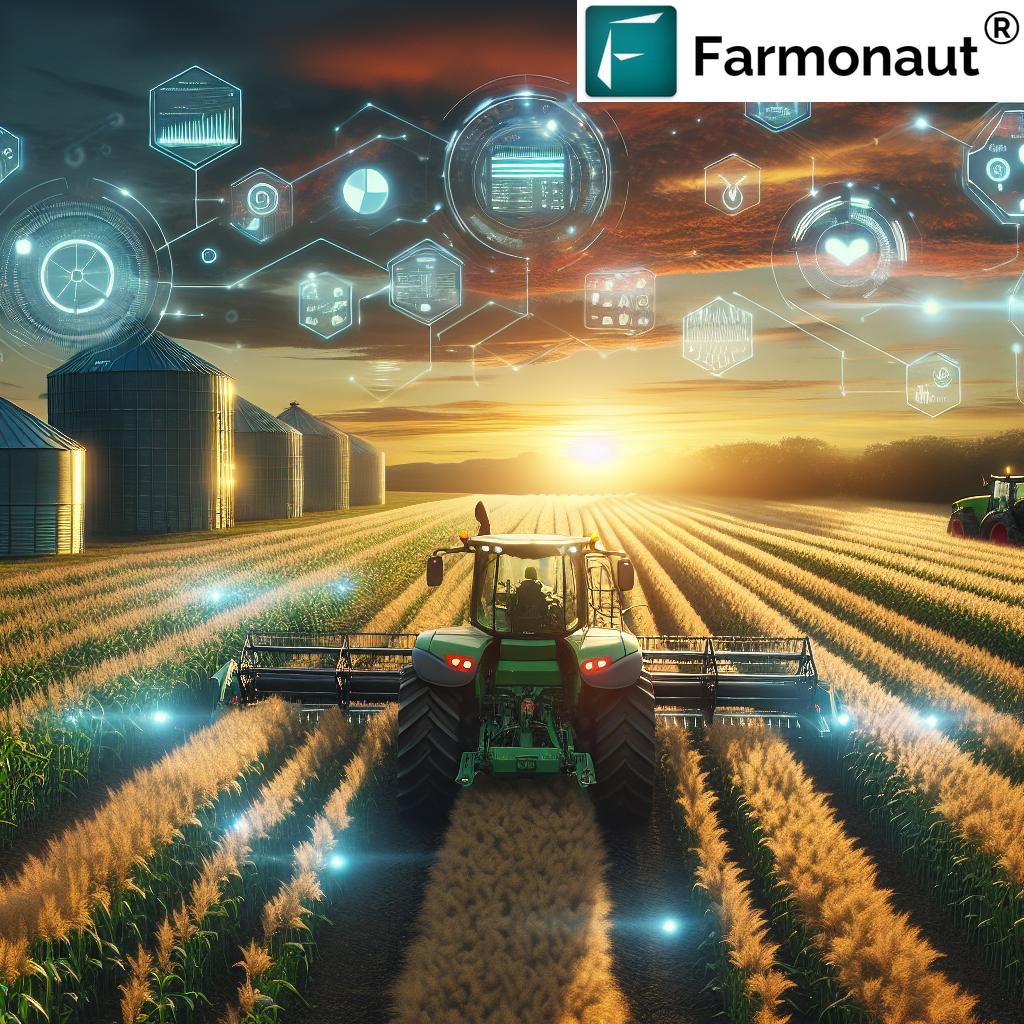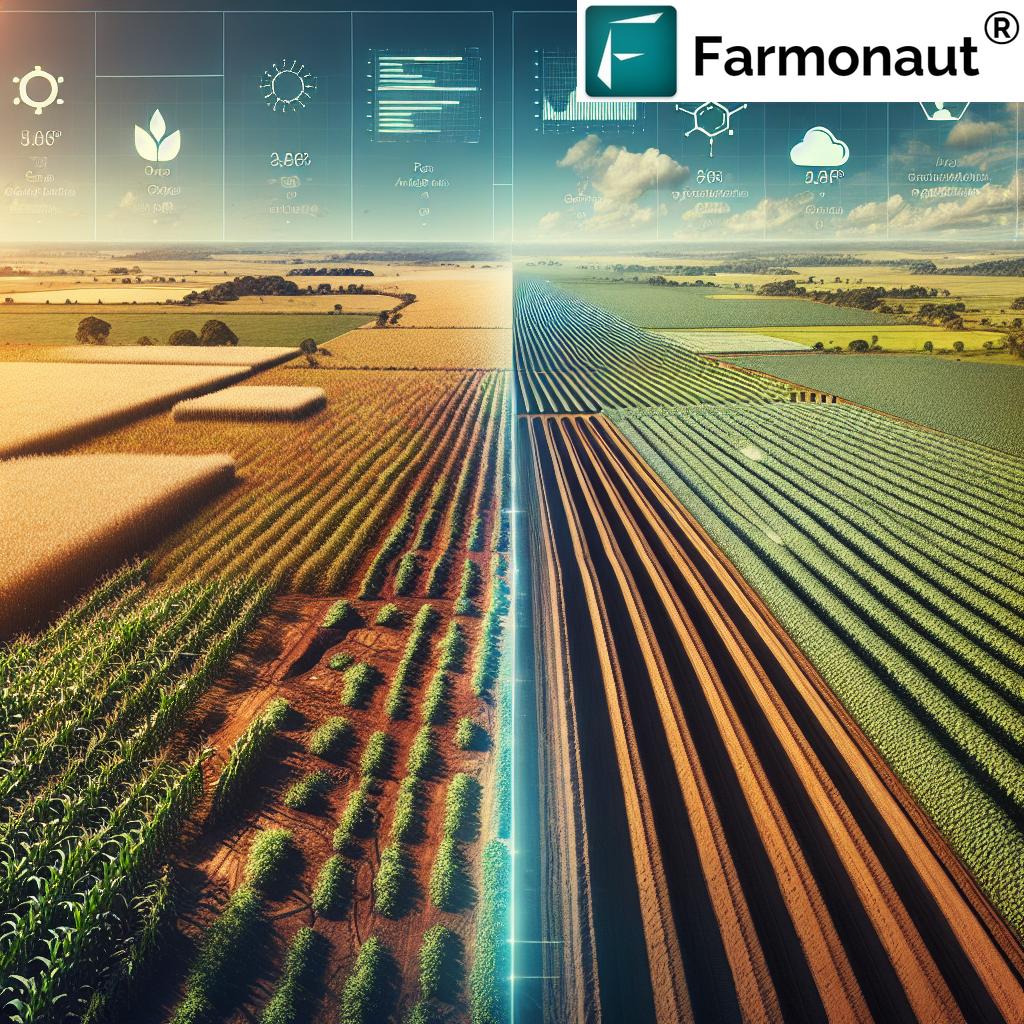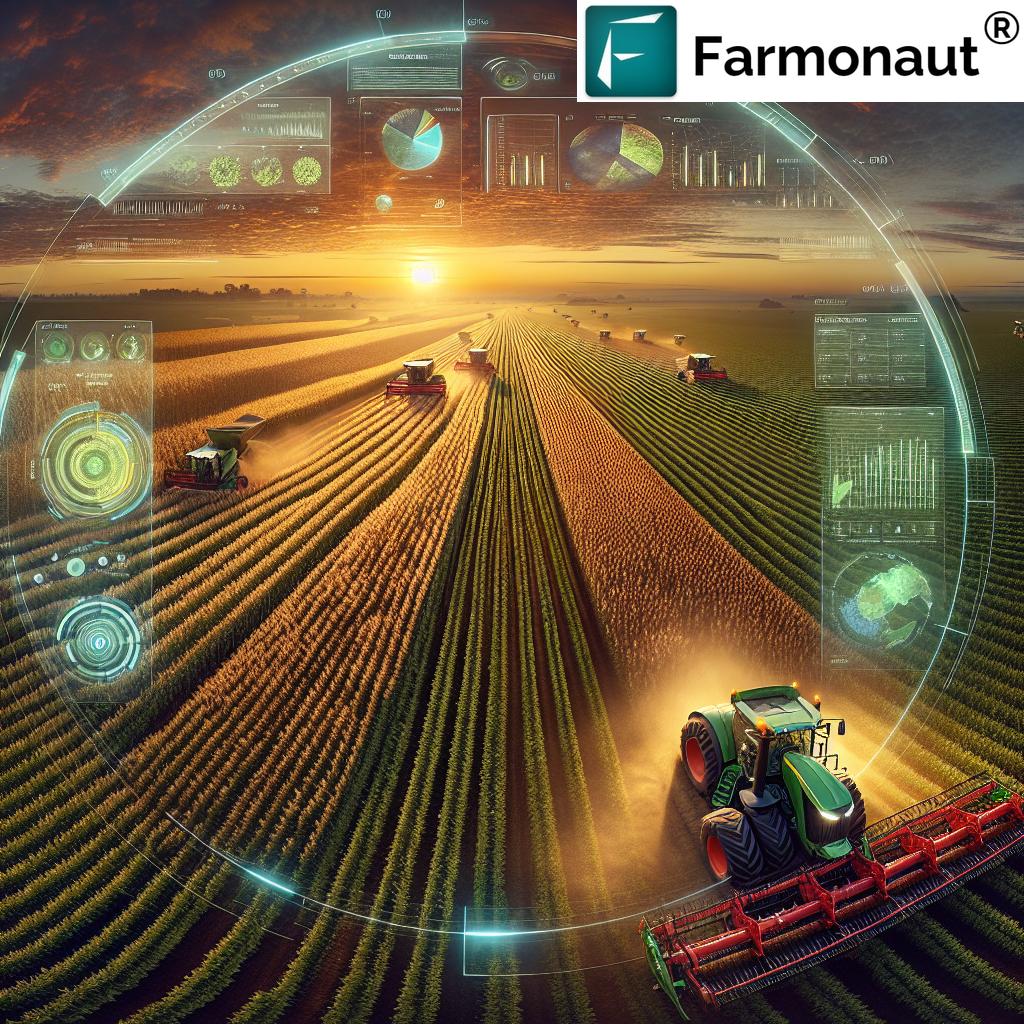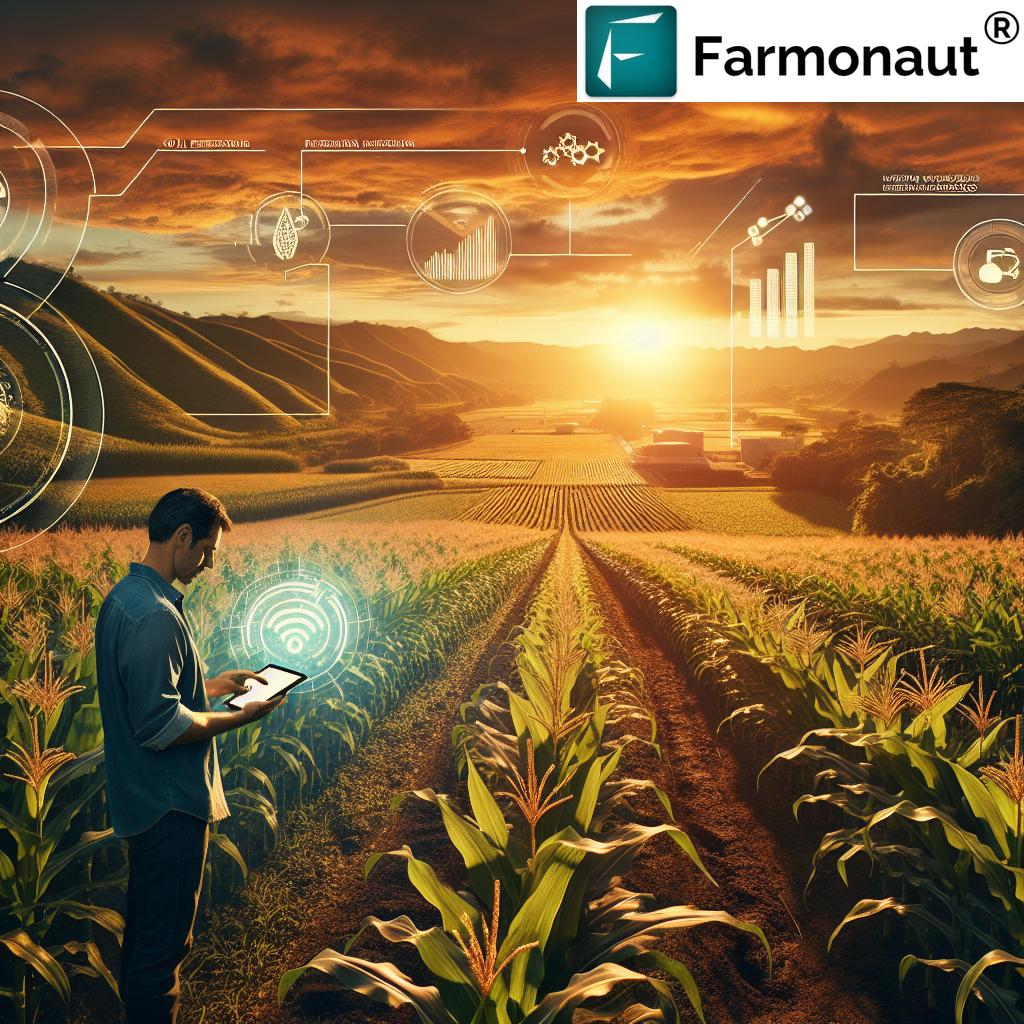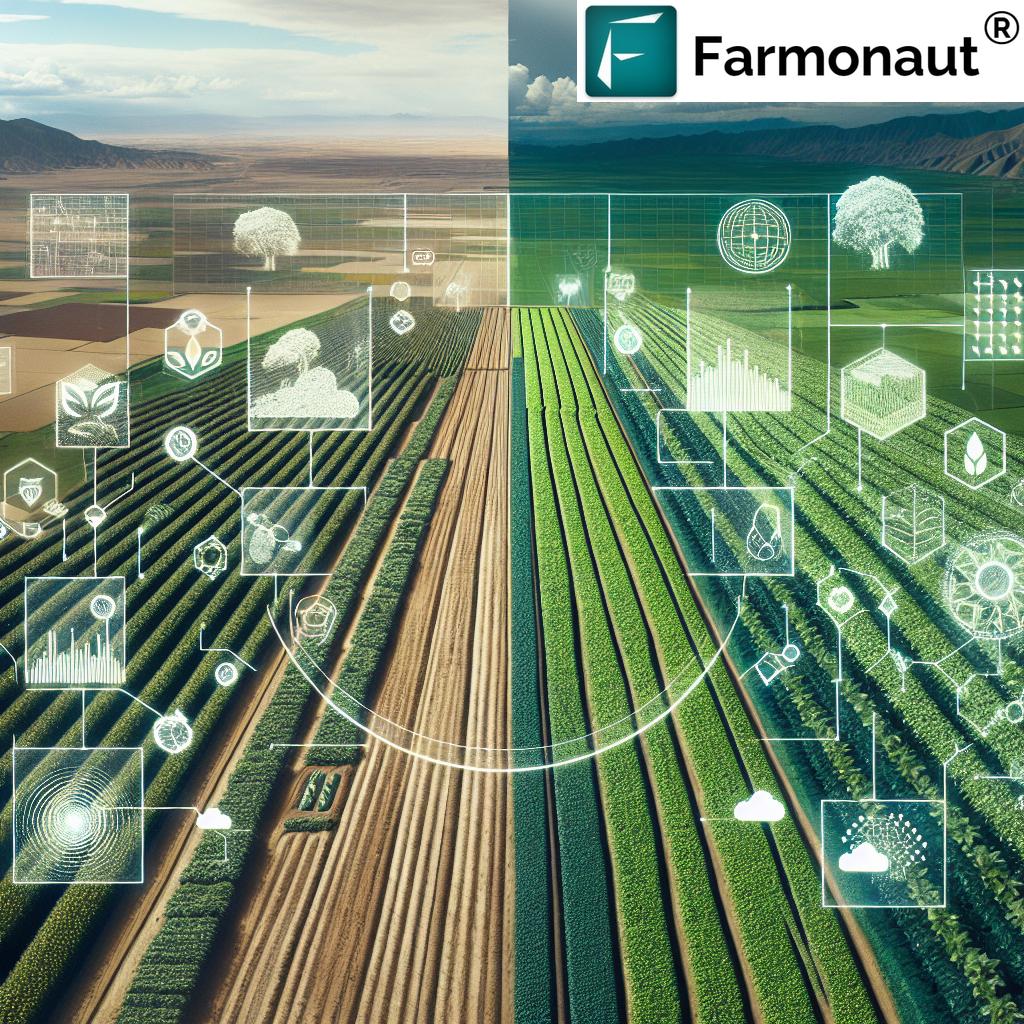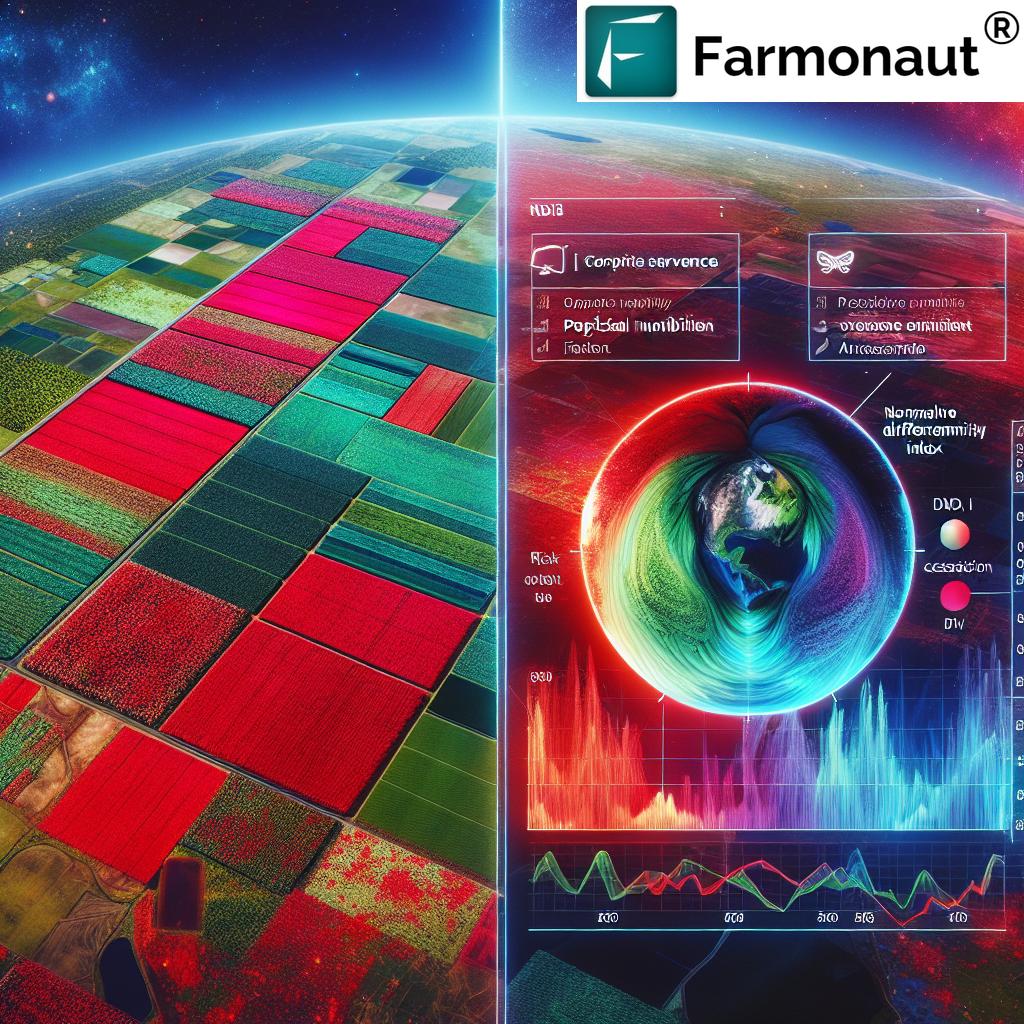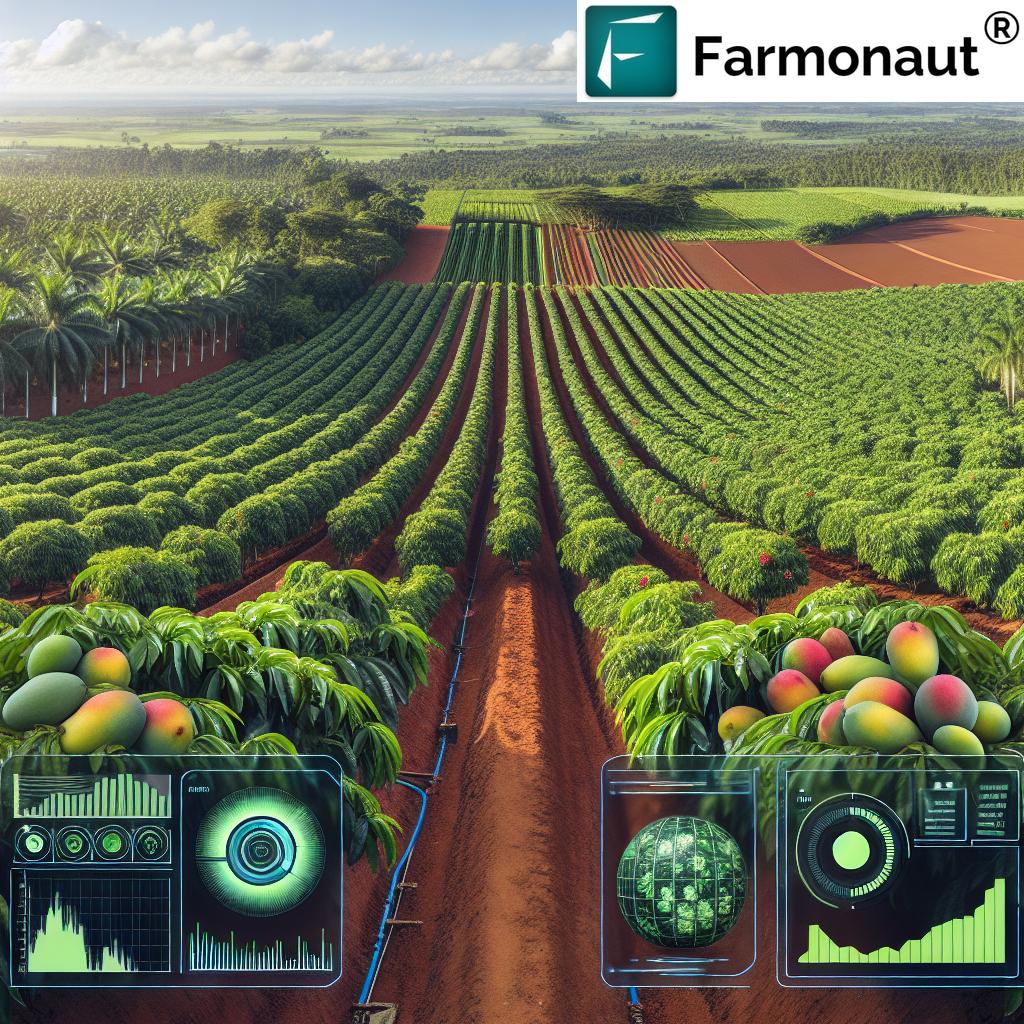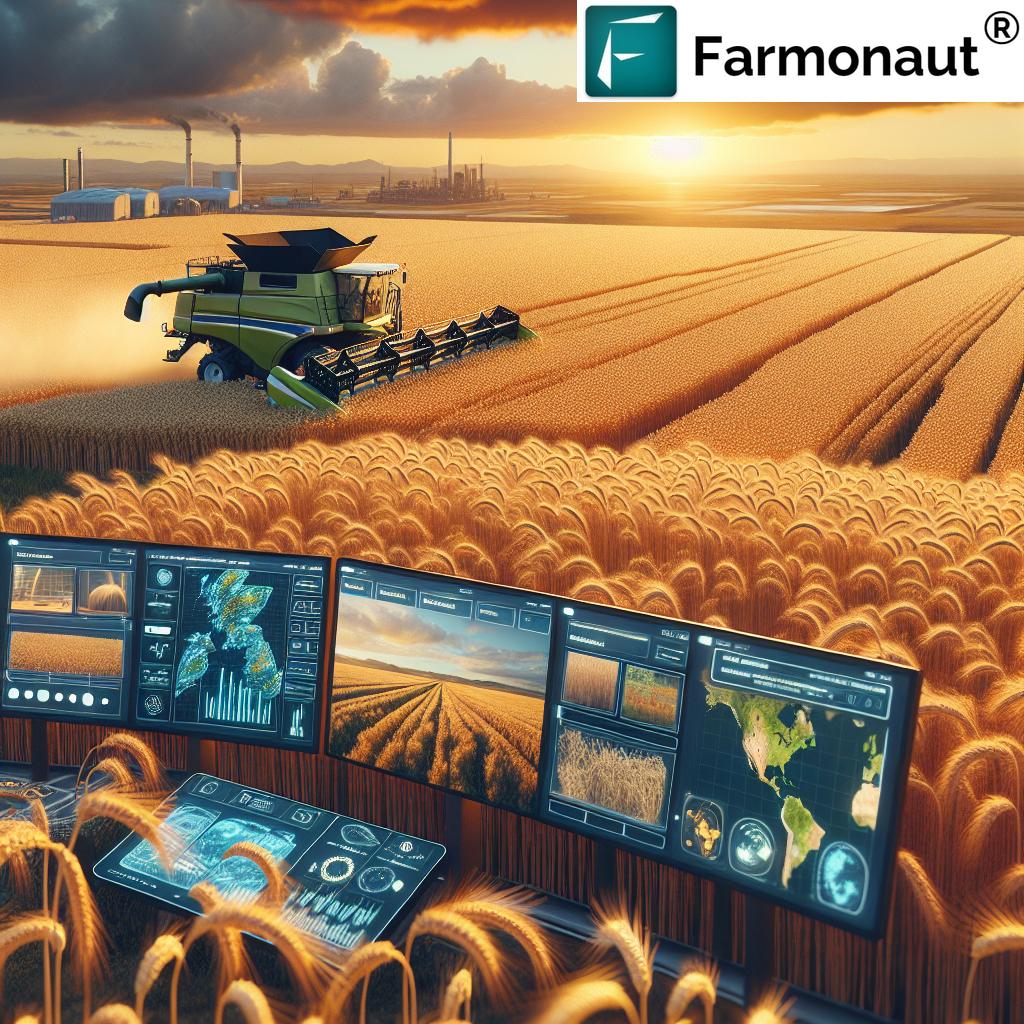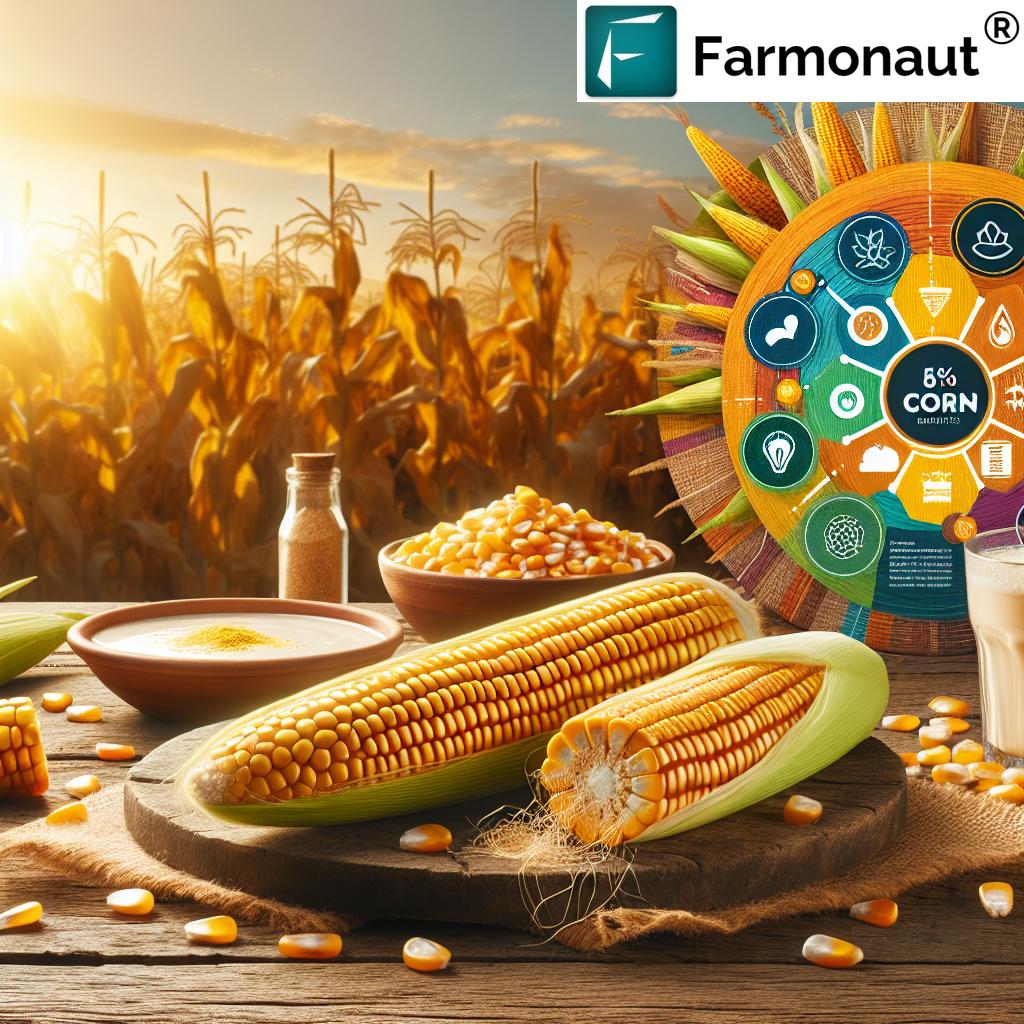Revolutionizing Agriculture: South American AgTech Partnerships Boost Global Farm Innovation
“South American agtech partnerships have contributed to a 30% increase in global farm innovation adoption rates since 2020.“
In the ever-evolving landscape of global agriculture, we are witnessing a remarkable transformation driven by cutting-edge technology and international collaboration. At the forefront of this agricultural revolution are the innovative partnerships emerging from South America, which are reshaping farming practices worldwide. In this comprehensive exploration, we’ll delve into how these collaborations are fostering sustainable agriculture solutions and propelling economic growth across continents.
The Rise of AgTech in South America
South America, with its vast agricultural lands and diverse climates, has become a hotbed for agricultural technology innovations. Countries like Brazil, Argentina, and Chile are leading the charge in adopting and developing precision farming techniques that are setting new standards for efficiency and sustainability in agriculture.
- Brazil: Pioneering large-scale precision agriculture
- Argentina: Advancing crop genetics and biotechnology
- Chile: Innovating in fruit production and export technologies
These nations are not just implementing technologies; they’re creating ecosystems that nurture innovation and foster partnerships between local farmers, international tech companies, and research institutions.
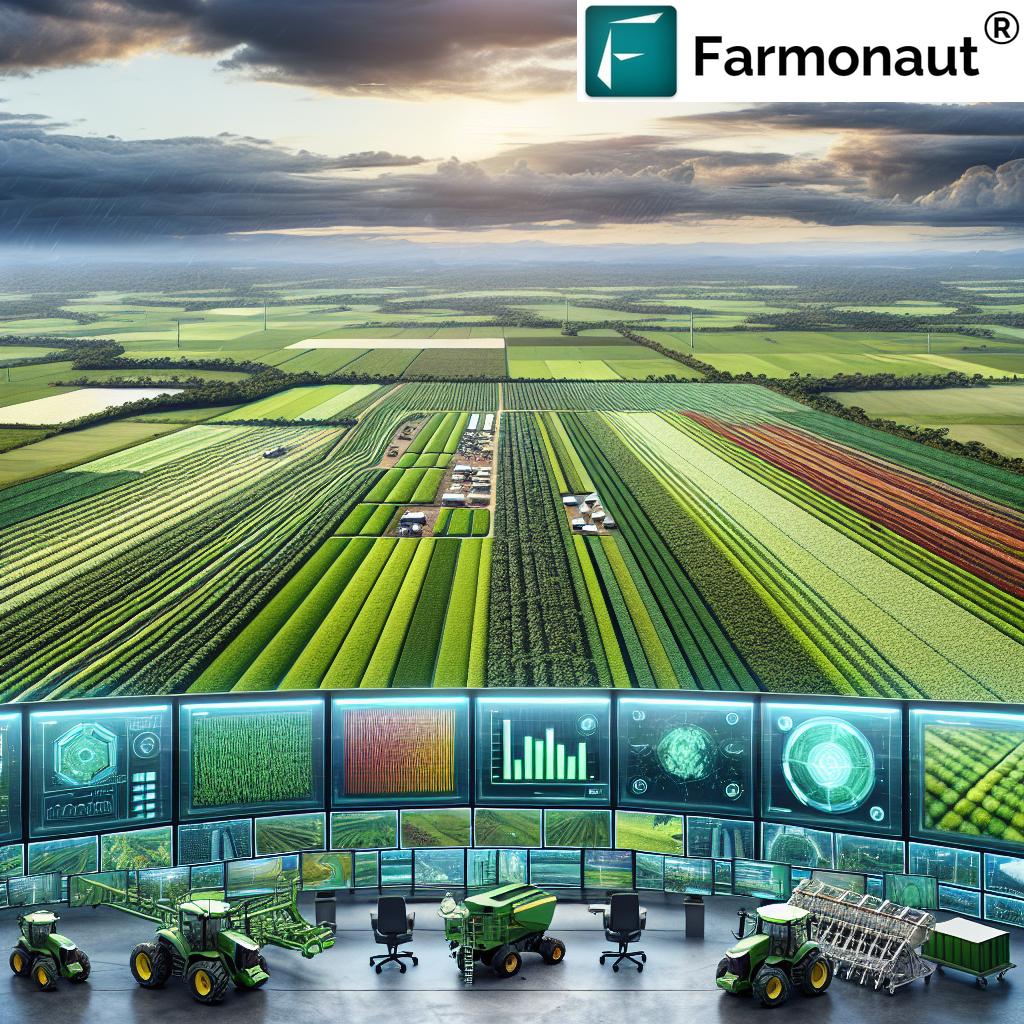
Key AgTech Innovations Transforming South American Agriculture
The agricultural sector in South America is experiencing a technological renaissance, with several key innovations at the forefront:
- Farm Management Software: Advanced platforms integrating AI and big data analytics to optimize farm operations.
- Drone Technology: Unmanned aerial vehicles providing precise crop monitoring and targeted treatments.
- Satellite Imagery: High-resolution imagery for large-scale crop health assessment and yield prediction.
- IoT Sensors: Networks of connected devices delivering real-time data on soil, weather, and crop conditions.
- Blockchain for Traceability: Ensuring transparency and authenticity in the agricultural supply chain.
These innovations are not only enhancing productivity but also promoting sustainable practices that are crucial for the future of agriculture.
The Impact of South American AgTech Partnerships
The collaborative efforts between South American agtech companies, research centers, and international partners are yielding impressive results:
- Increased crop yields by up to 20% in pilot programs
- Reduction in water usage by 30% through precision irrigation techniques
- Enhanced pest management reducing pesticide use by 50% in some regions
- Improved farm-to-market traceability, boosting consumer confidence
These partnerships are not just benefiting South American farmers; they’re creating ripple effects across the global agricultural community.
Cross-Continental Collaboration: A Case Study
A prime example of the power of these partnerships is the recent initiative led by agtech entities from the St. Louis area. Their trips to Brazil and Argentina have laid the groundwork for transformative collaborations:
- Engagement with local farmers, equipment manufacturers, and startups
- Focus on traceability programs and advanced data management
- Exploration of AI and drone applications in agriculture
- Utilization of geospatial technology for enhanced farm management
These interactions are fostering a two-way exchange of ideas and technologies, benefiting both regions and accelerating the pace of innovation in agriculture.
The Role of Satellite Technology in Modern Agriculture
“Satellite imagery for crop monitoring has improved yield predictions by 25% across 15 million hectares of farmland worldwide.“
One of the most significant advancements in agricultural technology is the use of satellite imagery for crop monitoring. This technology is revolutionizing the way farmers manage their fields and make decisions.
- Real-time crop health assessment
- Early detection of pest infestations and diseases
- Optimization of irrigation and fertilizer application
- Accurate yield forecasting
Companies like Farmonaut are at the forefront of this revolution, offering advanced satellite-based farm management solutions that are accessible through various platforms.

For those looking to integrate satellite data into their own systems, Farmonaut also offers an API solution:
Artificial Intelligence: The Brain Behind Smart Farming
Artificial intelligence is playing a crucial role in interpreting the vast amounts of data generated by modern farming techniques. AI-powered systems are helping farmers make more informed decisions, leading to:
- Optimized planting schedules
- Predictive maintenance of farm equipment
- Automated crop disease diagnosis
- Personalized crop management recommendations
Drone Technology: A Bird’s-Eye View of Agriculture
Drones have become indispensable tools in modern agriculture, offering capabilities that were once unimaginable:
- High-resolution aerial imagery for crop analysis
- Precision application of pesticides and fertilizers
- Livestock monitoring in expansive ranches
- Rapid assessment of crop damage after extreme weather events
The integration of drone technology with other AgTech solutions is creating powerful synergies that are transforming farm management practices.

The Future of AgTech: Trends and Predictions
As we look to the future, several trends are emerging that will shape the next wave of agricultural innovation:
- Vertical Farming: Urban agriculture solutions to meet growing food demands in cities
- Gene Editing: Advanced crop varieties with enhanced resilience and nutritional profiles
- Autonomous Farm Equipment: Self-driving tractors and harvesters optimizing field operations
- Blockchain in Agriculture: Enhancing traceability and reducing fraud in the food supply chain
- Precision Fermentation: Creating alternative proteins and reducing reliance on traditional livestock farming
These technologies, many of which are being developed or refined in South America, promise to address some of the most pressing challenges in global agriculture.
Comparative Analysis of AgTech Innovations in South America
| Country | Key AgTech Innovations | Notable Partnerships | Impact on Farming Practices |
|---|---|---|---|
| Brazil | Advanced farm management software, AI-driven analytics | Embrapa with international tech firms | 25% increase in soybean yields |
| Argentina | Precision agriculture drones, Satellite imagery analysis | INTA collaborations with global agribusinesses | 30% reduction in water usage |
| Chile | IoT sensors for vineyard management, Blockchain traceability | FIA partnerships with European research institutions | 40% improvement in wine quality and traceability |
| Colombia | Coffee crop monitoring systems, Smart irrigation | Cenicafé alliances with US universities | 20% increase in coffee production efficiency |
The Role of Farmonaut in Agricultural Innovation
In the rapidly evolving landscape of agricultural technology, Farmonaut stands out as a pioneer in providing accessible and advanced farm management solutions. By leveraging satellite technology, AI, and user-friendly platforms, Farmonaut is democratizing access to precision agriculture tools.
- Real-time crop health monitoring using satellite imagery
- AI-powered advisory systems for personalized farm management
- Blockchain-based traceability solutions for supply chain transparency
- Resource management tools for optimizing farm operations
Farmonaut’s solutions are designed to cater to a wide range of users, from individual farmers to large agribusinesses and government institutions.
Download Farmonaut’s mobile apps for on-the-go farm management:


Challenges and Opportunities in Global AgTech Adoption
While the benefits of AgTech are clear, there are still challenges to widespread adoption:
- Digital literacy gaps among traditional farmers
- Infrastructure limitations in rural areas
- Initial investment costs for new technologies
- Data privacy and security concerns
However, these challenges also present opportunities for innovation and collaboration. Initiatives focused on farmer education, public-private partnerships for infrastructure development, and the creation of affordable AgTech solutions are addressing these issues head-on.
The Economic Impact of AgTech Partnerships
The economic implications of these AgTech partnerships extend far beyond the farm. They are driving:
- Job creation in both tech and agricultural sectors
- Increased export opportunities for agricultural products
- Development of new markets for AgTech solutions
- Attraction of foreign direct investment in agriculture
These economic benefits are contributing to the overall growth and stability of agricultural regions, particularly in South America.
Sustainability and AgTech: A Symbiotic Relationship
One of the most significant impacts of AgTech partnerships is the promotion of sustainable agriculture practices. These technologies are enabling:
- Reduced use of water and chemicals
- Improved soil health through precision farming
- Decreased carbon footprint of agricultural operations
- Conservation of biodiversity through targeted land use
By aligning technological advancement with environmental stewardship, these partnerships are paving the way for a more sustainable future in agriculture.
The Global Reach of South American AgTech
The innovations emerging from South American AgTech partnerships are not confined to the continent. They are having a global impact:
- Technology transfer to African nations to boost food security
- Collaboration with Asian countries on climate-resilient crop varieties
- Partnerships with North American agribusinesses for scaling solutions
- Knowledge sharing with European research institutions on sustainable practices
This global exchange of ideas and technologies is accelerating the pace of innovation in agriculture worldwide.
The Role of Government Policies in Fostering AgTech Growth
Government support has been crucial in the growth of AgTech in South America. Key policy initiatives include:
- Tax incentives for AgTech startups and research centers
- Funding for agricultural research and development
- Programs to improve rural internet connectivity
- Regulatory frameworks supporting the use of new agricultural technologies
These policies are creating an environment conducive to innovation and attracting both domestic and foreign investment in the AgTech sector.
The Future of Farming: A Vision of Technology-Driven Agriculture
As we look to the future, the integration of AgTech into farming practices promises to revolutionize agriculture in several ways:
- Fully automated farms with minimal human intervention
- Real-time, data-driven decision-making for optimal crop management
- Personalized nutrition through precision agriculture
- Seamless integration of farm operations with global supply chains
These advancements will not only increase productivity but also make farming more attractive to younger generations, ensuring the sustainability of the agricultural sector.
Conclusion: The Interconnected Future of Global Agriculture
The AgTech partnerships emerging from South America are more than just regional success stories; they are blueprints for the future of global agriculture. By fostering collaboration between farmers, technologists, researchers, and policymakers, these initiatives are creating a more resilient, efficient, and sustainable agricultural sector.
As we continue to face challenges such as climate change, population growth, and resource scarcity, the innovations born from these partnerships will play a crucial role in ensuring food security and environmental sustainability. The future of farming is being written today, and it’s a story of technology, collaboration, and innovation that spans continents and connects us all.
FAQs
- Q: How are South American AgTech partnerships impacting global agriculture?
A: These partnerships are driving innovation in farm management, sustainability practices, and crop yields, which are being adopted globally to improve agricultural efficiency and productivity. - Q: What role does satellite technology play in modern farming?
A: Satellite technology provides real-time crop monitoring, enables precise resource management, and helps in early detection of issues, significantly improving farm management decisions. - Q: How is artificial intelligence being used in agriculture?
A: AI is used for predictive analytics, automated farm equipment, personalized crop recommendations, and interpreting complex data from various farm sensors and satellites. - Q: What are the main challenges in adopting AgTech solutions?
A: Key challenges include digital literacy among farmers, infrastructure limitations in rural areas, initial investment costs, and data privacy concerns. - Q: How do AgTech innovations contribute to sustainable agriculture?
A: AgTech promotes sustainability by optimizing resource use, reducing chemical inputs, improving soil health, and enabling precision farming practices that minimize environmental impact.


